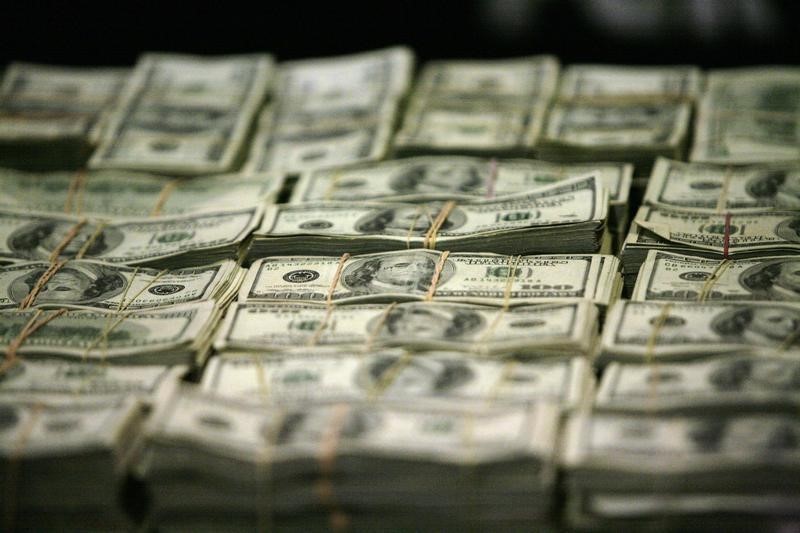Investing.com - The dolalr gaind solidly in Asia on Monday as President Donald Trump arrived in the region and weekend news from Saudi Arabia raised risk views.
USD/JPY changed hands at 114.51, up 0.38% and AUD/USD dipped 0.08% to 0.7645. EUR/USD was last quoted at 1.1614, up 0.08% and GBP/USD was cited at 1.3069, down 0.05%.
The Bank of Japan released monetary policy meeting minutes for the Sept. 20-21 meeting with many board members still see the current easing program working sufficiently well to hit the bank's 2% inflation target. Separately, remarks by Governor Haruhiko Kuroda later in the day offered continued support for "patient", aggressive easing. New Zealand reported inflation expectations at 2.0%, down a tick from 2.1%.
In weekend news, Saudi Arabia’s King Salman bin AbdelAziz, announced the formation of a ‘supreme committee chaired by Crown Prince (Mohammed bin Salman) and Chairman of the Monitoring and Investigation Commission, Chairman of the National Anti-Corruption Authority, Chief of the General Audit Bureau, Attorney General and Head of State Security.
The move includes the reported detainment Prince Alwaleed bin Talal, whose Kingdom Holdings dropped 10% in trading on the Tadawul stock exchange on Sunday.
The White House statement said Sunday that Trump and Salman held a phone call discussing counter terrorism efforts, "the continuing threat of Iranian-backed Houthi militias in Yemen" and Saudi Arabia's interception of a missile fired from Yemen at its capital, Riyadh but the white house said nothing about whether the arrests were discussed.
Trump said he expects to meet with Russian President Vladimir Putin when the two world leaders cross paths in Southeast Asia. Trump said pressure on North Korea was the priority during his first official visit to the region.
In the week ahead, investors will continue to monitor the progress of the U.S. tax reform bill in what will be relatively quiet week for economic data. China is to release data on trade and inflation while monetary policy announcements from the Reserve Bank of Australia and the Reserve Bank of New Zealand are also be on the agenda.
The U.S. dollar index, which measures the greenback’s strength against a trade-weighted basket of six major currencies, edged up 0.04% to 94.87.
Last week, the dollar reversed losses on Friday after the release of U.S. factory orders and service sector data that saw investors look past a weaker than expected jobs report for October.
The dollar turned positive after U.S. factory orders and ISM non-manufacturing PMI data.
The Institute for Supply Management reported that its non-manufacturing purchasing managers’ index rose to its highest level since 2005.
Another report showed that new orders for U.S.made goods rose for the second straight month in September and orders for core capital goods rose more than expected.
The dollar had earlier fallen to its lows of the day after the release of October U.S. nonfarm payrolls, which came in below expectations.
The U.S. economy added 261,000 jobs in October, the Labor Department said, falling short of forecasts for 315,000 new jobs. The unemployment rate ticked down to 4.1%, its lowest level since December 2000.
Some investors believe the data was distorted by the effects of recent hurricanes in the U.S.
Investors were also focused on the proposed tax overhaul outlined by Republican lawmakers on Thursday.
Some traders believe tax reforms could bolster growth, adding pressure on the Federal Reserve to raise interest rates, known as the "Trumpflation" trade.
Meanwhile, sterling nudged higher, with GBP/USD rising 0.13% to 1.3076, one day after posting the largest one-day decline since the June 2016 Brexit vote after the Bank of England raised interest rates for the first time in more than a decade but said it sees only gradual rises ahead.
